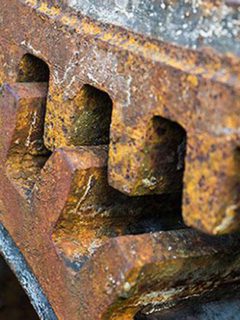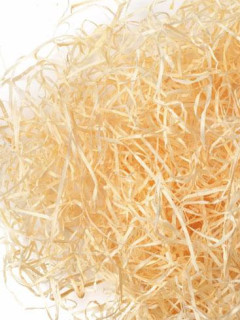From cave paintings to papyrus and from paper to computers, communication has undergone a huge evolution. Although digital communication is evolving, print is still an important medium for businesses. Many restaurants still offer their customers a paper menu and the paper newspaper still exists. As you can see, paper still has a bright future in communication. Choosing the right printer paper for your internal or external communication is a must. Take a look below and learn more about printer paper.
.
1. What are the 3 basic characteristics of printer paper.
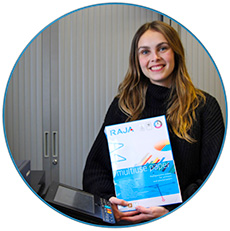
► 1.1 Weight and thickness
The weight of the paper is measured in grams (g) and its thickness is measured in grams per square metre (g/m²). The thickness of your printer paper depends on the amount of cellulose, coating, moisture, filler and fibre type used. The composition of the paper therefore plays an important role. The thicker the paper, for example, the more moisture it absorbs from the ink when printing on both sides, and does not curl.
► 1.2 Whiteness
Whiteness is an important factor regarding the print quality of your paper. The higher the whiteness, the more visible the ink is on the paper and the more contrast there is. Whiteness is measured in CIE (Commission Internationale de l’Éclairage). This calculates the amount of light that is reflected on the paper. For example, CIE 150 reflects more light than CIE 95. A higher whiteness automatically means a better reflection of light. Paper can be bleached either chemically or with bleaching agents. Recycled paper is bleached using brightening agents.
► 1.3 Smooth
There was a bigger difference in the past with so-called rough papers and smooth ones. But nowadays, almost all printer paper is smooth. Smooth paper is less likely to get stuck in the printer, prints better and uses less ink. Rougher paper is more suitable for note taking, for example.
.
2. What paper sizes are available?
There are different paper formats around the world, with different names. To structure all these sizes, international standards have been established (except for the US and Canada). The well-known A4 is part of the ISO 216 standard, while the C5 is part of the ISO 269 standard. Below we present the most common formats.
► A format
The A, B, C, D and E series are found throughout Europe, with the A series being the most widely used paper format. Have you ever wondered what A4 or A5 means? If you fold the basic format (A0) 4 times, you get the well-known A4 format. The same logic applies to the other series.
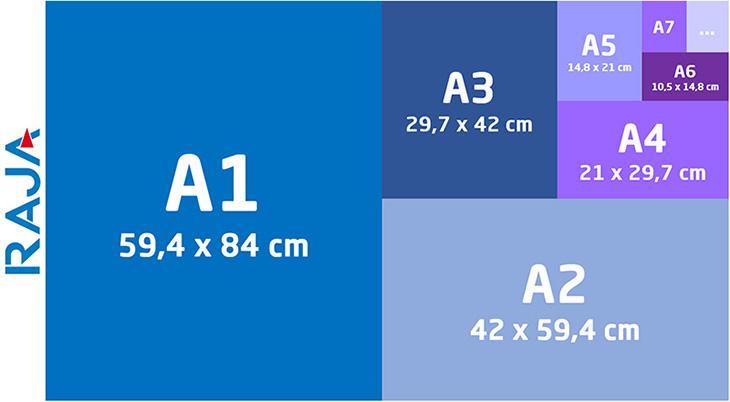
Structure of A0 paper size
► B format
The A series contains the most commonly used paper sizes, but who says A, must say B. The B series has larger dimensions than the A series and is therefore used for special sizes that are not in the A series. Think of special formats for printing books, posters or displays. The B series is therefore not suitable for standard printers. This is why these formats are generally used by professional printers.
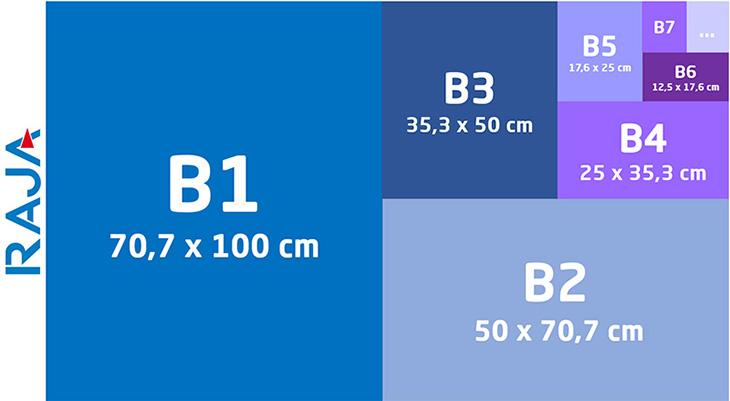
Structure of B0 paper size
► C, D, and E formats
The C and E series were designed as rectangular envelopes to send A (for the C series) and B (for the E series) sizes. An A4 sheet fits perfectly into a C4 envelope, just as a B4 sheet fits into an E4 envelope. Finally, the D series exists to complete the formats that are missing in the A and B series. Intermediate sizes, so to speak.
► DIN and Square formats
These two special formats have a slightly different shape than a conventional sheet of paper. The DIN is narrower and more elongated than standard printer paper, while the square has a square shape. Their particular shapes are therefore used for specific printed material such as menu cards or greeting cards.
3. Choice guide: what are the applications of printer paper
Printer paper has a wide range of'applications. Our analysis of the 3 basic characteristics will already help you in your search. Printer paper can be used for different purposes, but at RAJA we will discuss the 4 most popular ones.
- are always recyclable?
- have a standard thickness of 80 g/m²?
- have ecological labels such as PEFC, FSC, Blauer Engel and Ecolabel?
Standard Printer Paper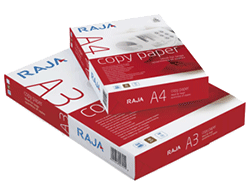 |
. . |
100% recycled paper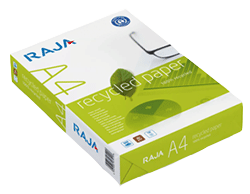 |
. – Application: one-sided printing. – For monochrome printing. – Whiteness: low quality CIE 135. – Format: A4. – Opt for an ecological brand image: made of 100% recycled fibres. Bleaching without chlorine treatment. |
Multipurpose Paper |
. |
Premium Paper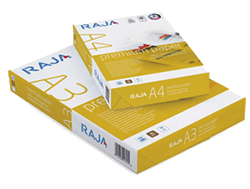 |
. . |












